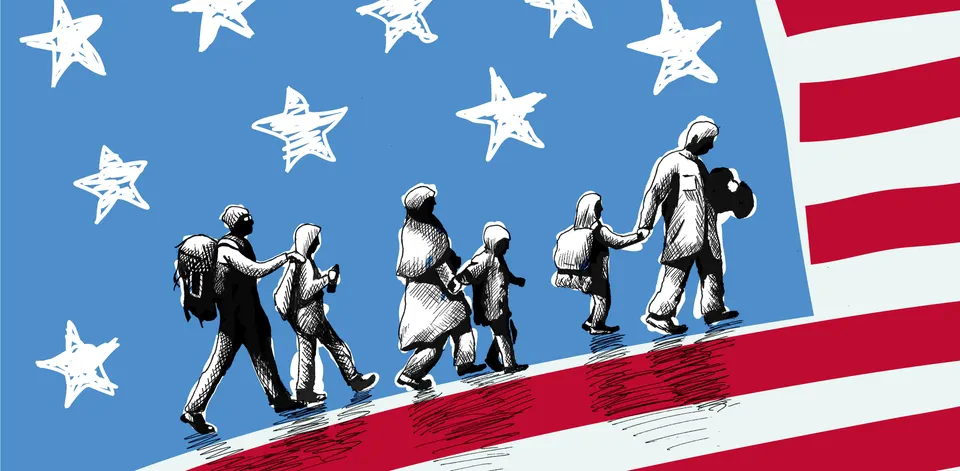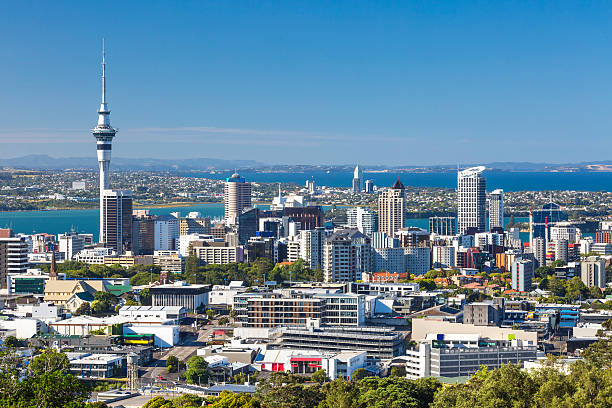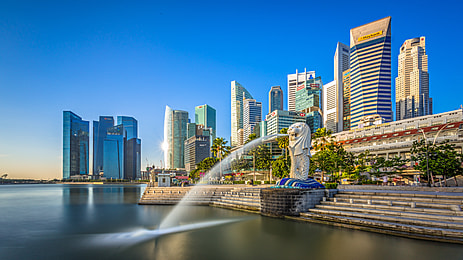Introduction
From your countries of origin to other nations, many people travel for several reasons such as looking for greener pastures, family reunion, or even security. The act of people moving from one place to another is an essential aspect throughout the history of mankind because it influences the manner in which countries develop politically, culturally and economically.This term is controlled by complex legislations and statutes that ensure an orderly movement of individuals into foreign lands by taking care of their requirements alongside that of the host nations.
Immigration plays a critical role that cannot be overemphasized. To begin with, immigrants enrich the workforce, fill labor shortages, and contribute to innovations. Embracing different practices, traditions and perspectives, culturally they create diversity and enrich societies. Countries dictate the values including international cooperation and human rights through their respective policies on immigration. In the past, many waves of people have migrated owing to things like economics, politics or social issues such as wars and problems associated with the environment. Consequently, some neighborhoods have actually been established which in the long run serve as part and parcel of their host countries.
Multiple stages make up the immigration process each with its requirements and challenges. At times of considering eligibility, filing petitions, making visa interviews and integrating into new societies, immigrants usually go through a complex path loaded with legal, financial, and emotional uncertainties. Anyone who is thinking about making such a momentous decision or evaluating the consequences of immigrating into a new country must understand those measures and distinct immigrant groups including family-based, work-based and refugee immigrants.
Types of Immigration
Family-Based Immigration :
U.S citizens and lawful permanent residents are allowed to sponsor close relatives to join them in the country because of family-based immigration. In this category, immediate relatives such as spouses, children under 21 years old and parents of U.S citizens are given first priority, and they do not have to be included on the waiting list as far as numerical limits are concerned.Preference categories have yearly limits defined by other family members like adult children and siblings; hence, there might be some waiting times for them. It requires filing a petition (Form I-130), proving blood ties and showing financial capabilities.This process underscores family reunification criteria stipulated in immigration rules as a way of acknowledging the need to strengthen family bonds within new societies.
Employment-Based Immigration :
As discussed In this paper, Visa availability is the number one hurdle affecting the time it takes for an applicant to obtain Employment-based Immigration. A common way of reaching this place includes getting labor certification from Labor Department; filling out I-140 form with the U.S. Citizen & Immigration Services as your benefactor; and possibly applying for changing your legal residency status using USCIS Form I-485 provided one had been living within states previously, among other requirements; it’s our hope that through it we would be able to pull in skilled experts who would spur economic progress while at the same time responding effectively on different fields’ external deficits within America.
Humanitarian Immigration :
Humanitarian immigration allows refugees and asylum seekers to escape persecution or danger in their home countries. While refugees apply for resettlement outside the U.S., most of them make their applications via the United Nations High Commissioner for Refugees (UNHCR); as for asylum seekers, they apply for protection upon arriving in the U.S. or its border.In order to be considered for asylum, an individual must show that s/he has a valid reason for being afraid of persecution due to his/her religion, race, nationality, political stance, or social affiliation. Humanitarian immigration showcases America’s stance toward humanitarianism aimed at those facing life-threatening conditions and in search of fresh prospects.
Diversity Visa Program :
The Diversity Visa (DV) Program, also known as the visa lottery, is a program that is meant to help people get green cards and be able to live in America forever. This is possible through entering the lottery for immigrants with fewer chances of entering America lawfully. The Diversity Visa (DV) Program, also known as the visa lottery, provides an opportunity for legal residence status for people from countries with low levels of immigration to the United States. This is a html element that has two paragraphs instead of one Called para tag here’s the sentence; ‘Each year, the Department of State makes 55,000 visas available through a random selection process to meet the necessary requirements.What are some simple but strict criteria targeted at would-be participants for instance high school diploma holders alternatively those who have worked for two years in occupations meeting laid down standards . Those who are selected through a draw must fill in Form DS-260, go through medical check-ups as well as other security measures then appear before officials of the US embassy where they will be granted with their visas.”
Student and Exchange Visitor Visas :
Students on an F-1 visa and exchange visitors on a J-1 visa are allowed to study or take part in exchange programs within the United States. While F-1 visas are reserved for full-time academic students at SEVP-approved institutions, J-1 visas embrace a range of exchange programs such as scholars, researchers, and medical trainees.To receive an admission, applicants must be enrolled into a program, pay the SEVIS fee, and show that they can afford their upkeep. Visa status maintenance necessitates full-time registration and adherence to policies of a program. Such visas aim at promotion of international education and exchange of cultures which makes it beneficial not only for students themselves but also their local societies.
General Steps in the Immigration Process
Step 1 : Determine Eligibility : For purposes of starting immigration process, the first thing that is supposed to be carried out to a person who wants to immigrate is to confirm whether she/he qualifies on family grounds, on employment reasons, is in dire need of humanitarian assistance or meets other requirements which may be applicable in such a case. To ensure one meets all specific needs necessary for an individual because there are different categories in which people may live forevermore, there are many resources through which immigrants can be assisted, these include sites such as USCIS webpage as well as soliciting help from immigration attorneys.
Step 2 : File a Petition : When you file a petition, you begin the immigration process by submitting the correct form to USCIS. For example, family-based immigration requires I-130 whereas employment-based I-140 forms. In this stage one has to show kinship or job offer and furnish enough proof to authenticate the immigration appeal.
Step 3 : Wait for Petition Approval : For permission approval, USCIS revises the application submitted. It depends on the type of case and workload. Approvals, denials or Requests for Evidence may be sent to applicants. At this time, it is important to be patient and pay attention to what is happening with your application.
Step 4 : Visa Application : As soon as you have been granted permission to get into the country, you should present a duly filled application for a visa (DS-260 form when applying for immigrant or DS-160 in case of non-immigrant visa). Among the activities that follow at this stage are; collection of necessary papers, having a medical checkup as well as acquiring clearance from law enforcers. To proceed, there is need to ensure that all these conditions have been met without any mistakes made or delays recorded.”
Step 5 : Attend Visa Interview : During a U.S. embassy eavesdropping or consulate, it is basically all about your background, the reason you want to come into the country and if you deserve it or not. You must bring all necessary paperwork for any detailed questions they might ask you. Being able to pass through this stage well is critical before going ahead with your trip arrangement to America.
Step 6 : Receive Visa and Travel : The U.S.Any candidate who got the visa can go to America. When you arrive at the border, custom and Immigration Enforcement officers will carry out more investigation. Therefore for you to be lawfully admitted into the United States, carry every document which is needed and adhere to the entry conditions.
Step 7 : Adjustment of Status/Green Card Application : If you are already living in the United States, the procedure of adjusting your status includes completion of Form I-485 to get a green card as a permanent resident. You have to submit certain documents, go for biometrics, and probably face an interviewer during the whole process. It is at this point that you can be given a green card enabling you to live in America on a permanent basis.
Specific Processes for Different Immigration Categories
Significant deviations exist in immigration procedures, depending on the classification to which a person belongs. Different qualifications, processes, and intentions are set for each classification. This article focuses on Migration categories including Work visa, Student visa, Family visa Investor visa asylum seeking.
Work Visas: An Overview
Purpose : Work visas are designed to allow foreign nationals to legally work in a host country for a specified period. These visas are essential for individuals who have secured employment abroad and meet the host country’s work requirements.
Application Process :
1. Job Offer : Get a job offer in the destination country. In most cases the employer has to show that they have not been able to find any local candidates for the position.
2. Visa Application : To get a work visa, one has to apply for it through the immigration authorities of the host country by filling out application forms, making payments as well as submitting job offer letters among others like proof of qualifications and valid passport.
3. Employer Sponsorship : A sponsorship certificate or endorsement of the visa application must be provided by the employer in many instances.
4. Work Authorization : If agreed, the work visa makes it possible for you to commence work based on the conditions given to you. It may have limitations on the kind of job you do or who employs you.
Examples : H-1B Visa (USA), Tier 2 (General) Visa (UK), Skilled Worker Visa (Canada). This is because such visas are usually only given to persons who have certain necessary skills or qualifications in order to utilize them in various job settings. Such visas are therefore vital because they help improve the movement of skilled workers.
Student Visas
Purpose : The foreign national student currently pursuing their academic or exchange program abroad must have a student visa of the host country.
Application Process :
- Admission to Institution : Get an acceptance letter from a reputable learning institution. You must have this in order to apply for a student visa.
- Visa Application : Submit all the documents and certificates to the immigration authority of the host country which include application forms fulfilment, payment of fees, acceptance letter, proof of financial means, valid passport and sometimes the language proficiency tests’ results (eg. TOEFL, IELTS – if applicable,)
- Supporting Documents : Kindly submit extra documents such as health insurance proof, academic transcripts, not forgetting accommodation details
- Interview : In some nations it is necessary to have a visa interview with the embassy or consulate in order to assess one’s intentions and eligibility.
- Visa Issuance : After getting the green light, the student visa is given to students that enables them to get into the country and start studying. This visa usually contains some clauses that specify the amount of time one can perform some part time jobs within a given semester.
Examples : Semester4 Visa (UK), Australia Student Visa (AU), Study Permit (Canada). Commonly, these visas are utilized by students to stay on course with their academic activities and at times they are inclusive of terms permitting interim employment opportunities and job licenses post studies.
Family Visas : An Overview
Purpose : Relatives from overseas can get family visas to get to their family members living in a foreign country in order to promote family reunification as well as to contribute to the welfare of immigrants and their families.
Application Process :
- Eligibility Criteria : These sponsors have to show that they are either citizens or lawful permanent residents in the country where they are hosting the refugees as well as show how they are related to these applicants including but not limited to their parent, spouse or child etc. and those who can be able to be financially stable enough to provide for their other family members or dependents.”
- Application Submission : The visa applicant is required to fill out the necessary form and attach evidence concerning his or her marriage as well as proof that shows the sponsors’ legality of residency in that foreign country before any visa can be granted.
- Supporting Documents : The additional documentation may involve proof of health insurance, police clearance certificates as well as medical examination reports.
- Consular Processing : If you are not a resident of the hosting country, you usually need to have an interview at the local embassy or consulate. The purpose of the interview is to determine whether the relationship is real or not and the person applying for the visa is qualified enough.
- Visa Issuance : After the sponsor has approved it, the family visa lets the sponsored kin come to the host state. Typically, this grants the right to live in the host state and may include employment in limited circumstances.
Examples : Spouse Visa (USA), Family Reunion Visa (Germany), Family Sponsorship (Canada). The family visa guarantees that the immediate family can be together, which mainly upholds the union of a family as well as the maintaining of a stable society.
Investor Visas :
Purpose : The objective of investor visas is to encourage immigrants who are able to invest large amounts of money in the economy of the country that they are visiting while they are in it to create more jobs thereby promoting the growth and development of this country.
Application Process :
1.Investment Requirements : Satisfy the lowest limit for investment that is determined by the hosting country. These usually include putting money into real estate properties; starting up companies as well as placing your funds in government securities. Host nations normally differ in terms of how much you need to invest there or what kind of business you should open.
2. Application Submission : Fill out the visa application to the final detail. Submit it alongside a comprehensive investment plan that shows how you will use the funds and what return/income stream you expect.
3. Supporting Documents : To ensure legality and legitimacy, one is usually asked to provide proof of financial resources, investment agreements, business plans, and background checks such as evidence of the source of funds.
4. Background Checks : Undergo backgrounds spent that confirm your claim of integrity as well as the lack of crimes committed or deceptions practised.
5. Interview and Evaluation : Some nations may mandate an interview or extra scrutiny for the investment idea.
6. Visa Issuance : After an investor visa has been granted, the holder of such visa can live in the host country and actively manage his investments; it may further lead to permanent residency or acquiring citizenship in the long run because of the continuous economic contribution that these visa holders make.
Examples : These visas, such as the EB5 visa in the USA, or Tier 1 investor visas in UK, the start-up visas in Canada enable wealthy people to have residency benefits in different countries as they invest in the economy.
Asylum Seeking :
Purpose: In order to escape persecution, violence, or grave danger in their countries; asylum seeking involves those persons who want to receive refuge and protection within foreign territories suffering such crises. Refugees are granted with this right if they satisfy given norms governing this passing.
Application Process :
1. Entry and Application : On the arrival to the host country an individual has to make an application for asylum this is mostly done at the border, airport or a designated immigration office. This happens because in some countries, it is possible for someone to seek asylum even after entering them.
2. Submission of Evidence : Candidates are required to submit detailed statements and evidence of persecution or perceived threats from their countries of origin, which could take the form of personal accounts by the applicants themselves; sworn statements from witnesses; or contemporaneous material like police reports or medical records.
3. Interview : When an asylum officer or immigration official does an investigation in order to determine the credibility of the petitioner’s allegations, and their eligibility for refugee status, it is called an interview and it is significant.
4. Legal Representation : People with asylum needs might wish to legally project themselves to support and overcome complex legal processes as well as construct a solid argument.
5. Decision : Upon reviewing the application, the authorities decide on it. In case of approval, one will receive asylum status that enables him or her to reside and engage into job activities within the country they are hosted permitting them after that to apply for permanent residency or citizenship in time.
6. Appeal Process : In case of denial, the asylum seeker can take the case to an immigration court.
Examples : In the USA it is a must to apply for asylum, in the UK there is a necessity to determine whether a person is a refugee or not and in Canada by claiming for refuge. The act of seeking asylum is essential for people who are running away from situations that can result in loss of life as it is in agreement with international human rights’ standards.
Challenges and Considerations in the Immigration Process
When you move into another country you are going to be faced with many situations and things to think about which could determine whether or not you will succeed in becoming a member of that society while ensuring that your health remains intact. It is important then that all of these circumstances are put into perspective if such individuals are to make sense out of them before they embark on any course of action towards this direction, whether as candidates or as people who make laws.”
Common Challenges :
1. Documentation Issues : Ensuring that all necessary paperwork is filled and submitted in good time can be a daunting task .Late or inaccurate documents can slow down the process or deny an applicant altogether.
2. Language Barriers : To apply for various visas, it is usually necessary for one to have proficiency in the language spoken in the host country. Mastery of the dialect remains not only crucial when making the application but also in interacting with the members of society.
3. Financial Requirements : For individuals with limited income there can be a barrier to progress in their efforts towards following some of these immigration routes. Financial demands have to be met in order to ascertain one’s ability to sustain oneself thus necessitating this for migration.
4. Legal Complexities : Immigration laws and regulations are quite intricate and can be altered at any time. It can be daunting to navigate these angles if you do not get some help. It is often expensive to consult immigration lawyers or advisors, a necessary step.
5. Cultural Adjustment : When it comes to a foreign culture adapting, societal standards, and daily human behaviors could be somewhat intimidating. Besides facing challenges there may be some obstacles which interrupt the communication and personal relations between local people and immigrant groups.
6. Employment and Recognition of Qualifications : It may be hard for the immigrant to get a job especially when their skills are not accepted by the host nation hence many end up without jobs while others take jobs they are overqualified for.
Considerations :
1. Seeking Legal Advice : Immigration laws are so complex that in many cases immigrants would better seek help from immigration attorneys or consultants, in particular with regard to cases which are not easy to understand.
2. Utilizing Resources and Support Networks : Utilizing the resources found in the immigrant nonprofits, leveraging local community movements, or relying on local networks, can all help one navigate the process and adapt in the new country.
3. Understanding Legal Rights and Obligations : Compliance with local laws is very much important for the immigrants as well as seeking appropriate assistance when necessary if they are to be aware of their legal rights and responsibilities in their new country.
4. Preparing for Integration : Learning how to speak, understanding what is acceptable in different cultures and welcoming a variety of experiences can make it much easier to fully integrate and enjoy immigration
CONCLUSION
Immigration process can be a complex path that needs thorough preparation, knowledge about the law and a capacity to overcome obstacles. Every step in this route – from getting a visa appropriate for your purpose (work, study, family reunion, investment or asylum) to observing all laws – is crucial. The process necessitates systematic planning with valid papers albeit there are situations when one needs advocate counsel to manage things including complications often associated with it. According to education, when community support, and resource utilization are used to deal with the problems, immigrants can smoothen their process even though it’s characterized by different difficulties such as language barriers, financial requirements, cultural adjustment, and employment challenges. Even though immigration is a complex process, people who want to move from one country to another can find advantages in it by looking for good jobs while nations where they migrate benefit because immigrants have different expertise and views. If applicants know the distinct steps and possible difficulties under each kind of migration, they will get ready in a better way, which will make them have more likelihood of shifting to another place successfully. At the end of the day, immigration is meant for more than just changing one’s place of residence; a new life should be established, assimilation should take place into a weird culture, and addition should be made to society’s well-being. With full knowledge and readiness, this course can be used successfully by any traveler and desired results can finally be obtained away from one’s own country.
Looking for Visa ? Connect with us!







